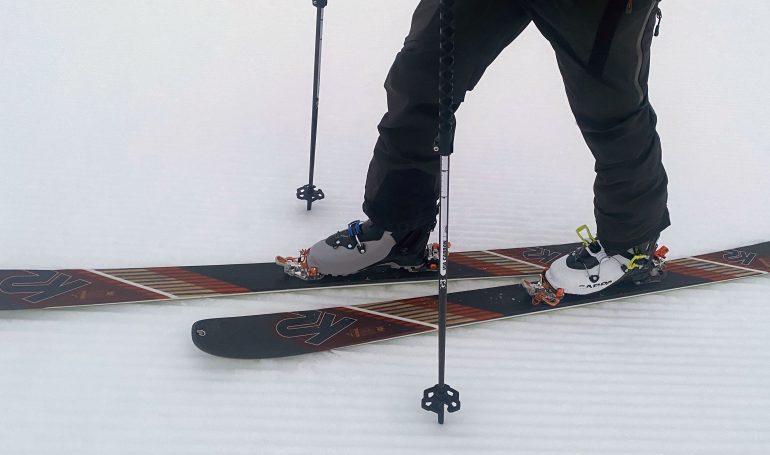
Comparing the Maestrale XT to my old favorite, the Maestrale RS.
I’ve been a fan of Scarpa’s Maestrale line of touring boots for years, with my current go to being the RS version (review here). The Maestrale RS is fairly light, and tours well, while still being “enough” boot to drive big skis. As with every touring boot, it is a compromise. For me, the compromise is on both ends of the spectrum: it doesn’t have the tour-ability of a light skimo boot, but also it gives up a bit of beef on the down, compared to a more alpine-like boot. That lands the RS right in the middle, which works very well for much of the skiing I do, especially in mid-winter.
I tend to like a beefier boot for the ski area, and backcountry tours that are more focused on having fun on the down. I’m often willing to sacrifice a fair bit of uphill performance to have a boot that can hold up to some air and speed. The fact is, I’m not a good enough skier to ski well in wimpy light boots. The Maestrale XT, a stiffer version of the RS new for this year, looked like an excellent option to fulfill this niche.
Since many potential Scarpa Maestrale customers are going to be deciding between the RS and the XT, I’m going to focus this review on comparing the two.
Features — similarities and differences
The XT is similar to the RS, with small, but effective changes. The tongue and lower shell are mostly unchanged. They look like they came out of identical molds. The lower shell has the same hybrid construction; Grilamid combined with LFT (fiber-reinforced) plastic. The tongue is “split” to allow the boot to flex in walk mode. While still made out of Grilamid, the upper plastic shell is an entirely new shape. It’s slightly taller (about 1cm taller on the back). The front of the cuff also has more surface area. The Maestrale XT and Maestrale RS both have three buckles, but the difference is where they are located. The RS has one over the lower shell, one over the instep, and one around the upper cuff. The XT has a similar lower buckle, but removes the instep buckle and replaces it with an extra buckle on the upper shell. The upper shell also incorporates a burly, stretchy power strap with a cam buckle. The other major change for the boot is the walk mode mechanism. It’s still external, but uses a different locking system that looks heavier duty, and also allows for forward lean adjustment; 14-18 degrees.
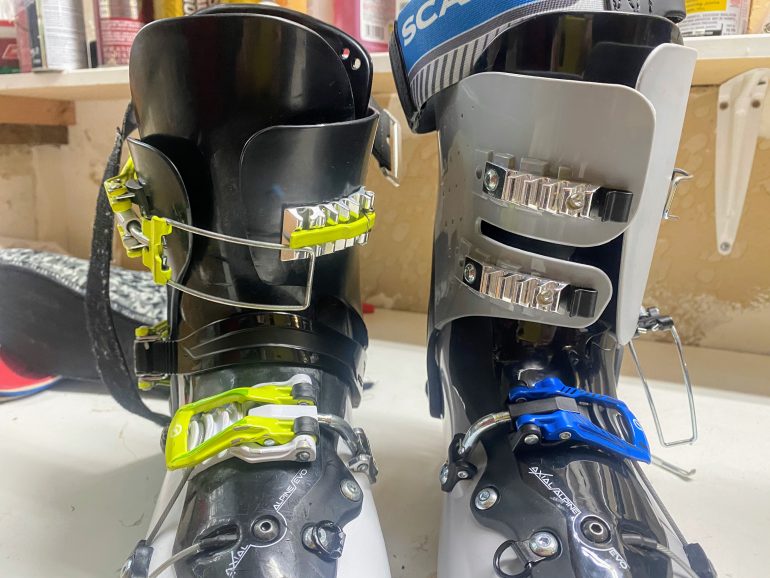
The view of the front of the boots shows the extra plastic in front of the foot, this adds considerable stiffness to the boot.
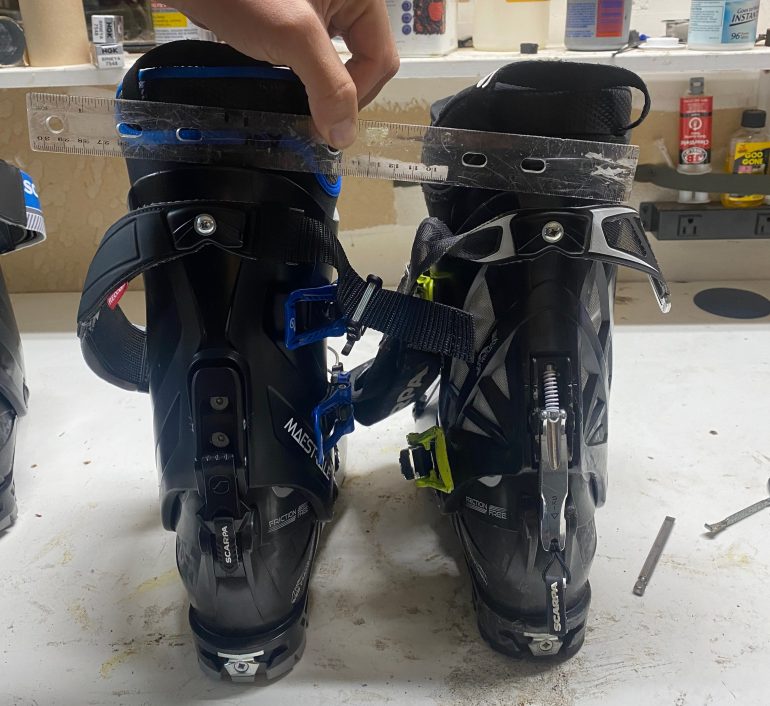
Rear of the two boots (XT on the left), the XT is noticeably higher (although the attached spoiler on the RS makes up for some of this difference).
These changes of course have the effect of making the XT a stiffer, heavier boot. The forward flexibility in walk mode is slightly less on the Maestrale XT (56 degrees) compared to the Maestrale RS (60 degrees), although it’s still quite good for a boot that is this burly. While investigating this reduced forward flexibility, I was surprised to find that it is entirely due to “stops” molded into the shell. These stops aren’t engaged at all in ski mode, but they keep the buckles on the upper cuff from hitting the forefoot buckle when in walk mode. The RS has these stops too, but they are situated farther back, and thus allow the boot to have a slightly wider range of motion. This is possible since the RS only has one buckle on the upper shell. These stops could theoretically be ground off to give the boot more range of motion, however then the lower cuff buckle may need to be moved or modified. Perhaps that’s something I’ll mess with in the future.
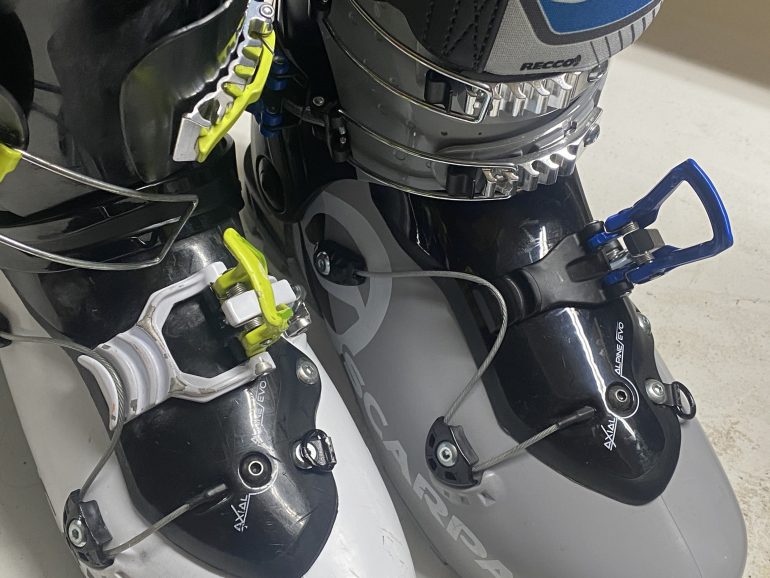
The forefoot buckles are functionally identical, however the XT version looks lighter and more minimal.
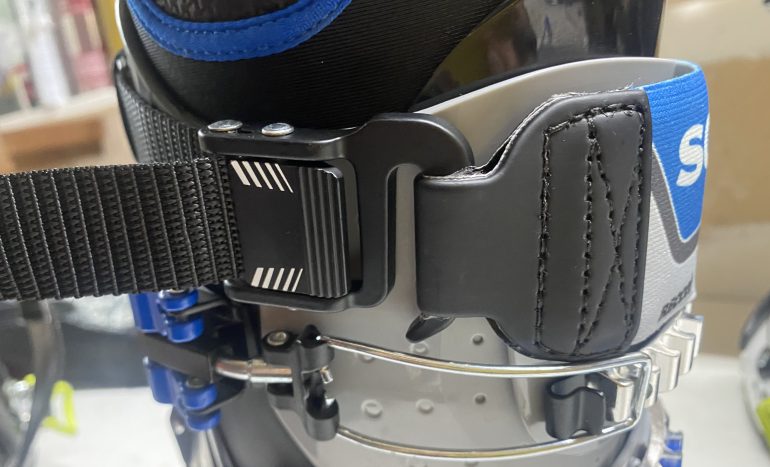
Best power strap in the industry? This buckle is easy to get on and off, and tightens up super snug. Awesome (but a little heavy).
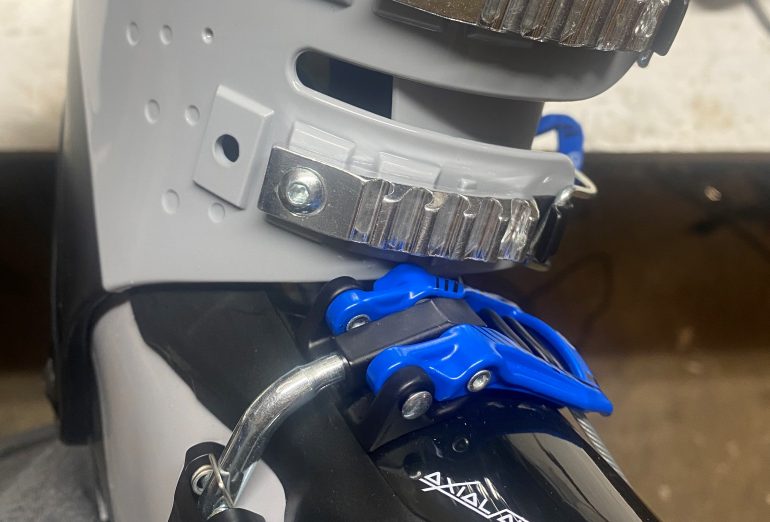
View of the front of the boot with maximum forward flex in walk mode. As you can see, the buckles are just about to hit each other, this is stopped by the “stops” molded into the shell.
My favorite aspects of the boot are the small improvements. The stretchy cam power strap is very well designed. Although “cam” power straps have become somewhat ubiquitous, they often require you to thread the webbing through the cam when donning or removing the boot. The Maestrale XT power strap incorporates a “tension hook” into the cam buckle to enable you to quickly unhook the strap without unthreading the webbing. This is a major upgrade, especially in cold or snowy conditions. The new ski/walk mechanism is also significant. One of my few gripes with the Maestrale RS is that the ski/walk mechanism is very prone to icing up. So much so that I habitually clear it out before every run. The XT’s mechanism appears to be much less prone to icing; it didn’t happen once during my testing.
Fit
Since these two Maestrale models are so similar, you might expect them to fit the same. Surprisingly, they don’t. Despite matching shell molds, the Maestrale XT comes with a plastic boot board underneath the liner and the Maestrale RS liner simply sits directly on the plastic shell. This boot board is about 6mm thick at the heel and takes up quite a bit of volume.. My foot is a fan of this; I usually have to add a few layers of something under my insole to take up volume in Scarpa boots, especially after the liner has packed out. The XT’s fit was snug right off the bat. The boot board can be modified, or removed entirely, to get a higher volume fit. The cuff of the boot is also made to have a narrower fit, although I couldn’t feel this in my testing, likely due to the fact that the cuff has more adjustment than the lower boot.
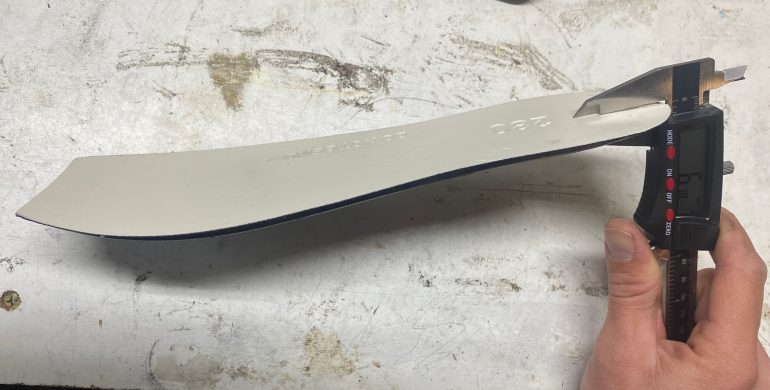
Included boot board is super nice, it’s very light, yet feels very hard and durable, like it won’t compress after lots of wear. This boot board also adds 2 degrees of forward ramp angle, so the boot has 6.2 degrees overall.
Uphill and downhill performance
Overall the Maestrale XTs performed well. I skied them on big skis (188, 115 underfoot) on several pow days. They are powerful, and feel nice and supportive. I noticed the increased stiffness when I landed wrong off a few drops. They also tour effectively, especially in comparison to other heavy-duty boots out there.
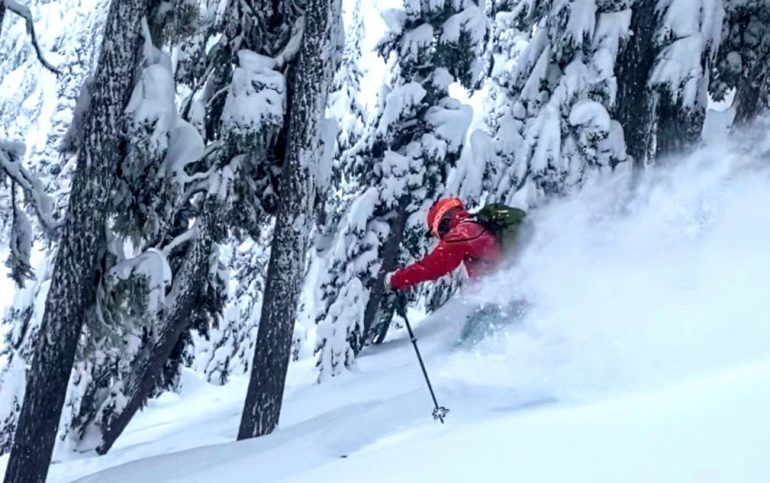
Testing the Maestrale XT’s this winter (sorry you can’t see the boots, too much pow).
My biggest question was how the XTs compare to the Maestrale RS. The verdict? They honestly feel quite similar. It was hard to quantify the difference after a few days of powder skiing in the XTs. To get a more direct comparison, I decided to try wearing one on each foot during a few short ski days.
Side by side on snow comparo
On the first skin, the differences became immediately apparent. As previously mentioned the XT has less forward flexibility in walk mode. This isn’t very noticeable when wearing the Maestrale XTs on their own, but the contrast between them and the RSs is immediately apparent when wearing both. I could feel the boot stopping my leg a bit when I was at full extension during each stride. On the other hand, I didn’t notice the slight weight increase of the XT. When I clicked into downhill mode, the difference between the boots was barely noticeable. They skied remarkably similar. However, I should note that I only skied fairly easy, low-angled terrain with good snow with this dual-boot setup. I wouldn’t be surprised if the XT’s extra stiffness became much more noticeable and beneficial in more difficult ski conditions.
The RS will likely keep its spot as my “go-to” boot, due to its slightly lighter weight and better range of motion. However, the XT is perfect for charging hard and even resort skiing. This could also be an ideal touring boot for a larger, more aggressive skier, or a one boot quiver that would work well everywhere from the resort to long tours in the backcountry.
SPECS Maestrale XT
Sizes available: 24.5 – 32
Flex: 130
Last: 101mm
Material: Carbon Grilamid, Grilamid/Pebax, Pebax
Forward Lean: 16 +/- 2 degrees
Cuff Articulation: 56
Sole: Vibram
Buckles: 3 buckles (+power strap)
Binding Compatibility: Tech, AT
Here’s some yummy weight numbers (size 27.5):
Shell (without liner or boot board): 1270 grams
Liner (without insole): 238 grams
Boot board: 28 grams
Total weight: 1536 grams
Numbers for the Maestrale RS (size 27, one shell size smaller than 27.5) for comparison.
Shell (without liner): 1178 grams
Liner (without insole): 258 grams
Total weight: 1436 grams
All weights measured on my postal scale.
Shop for the Maestrale XT or Maestrale RS.
Louie Dawson earned his Bachelor Degree in Industrial Design from Western Washington University in 2014. When he’s not skiing Mount Baker or somewhere equally as snowy, he’s thinking about new products to make ski mountaineering more fun and safe.
